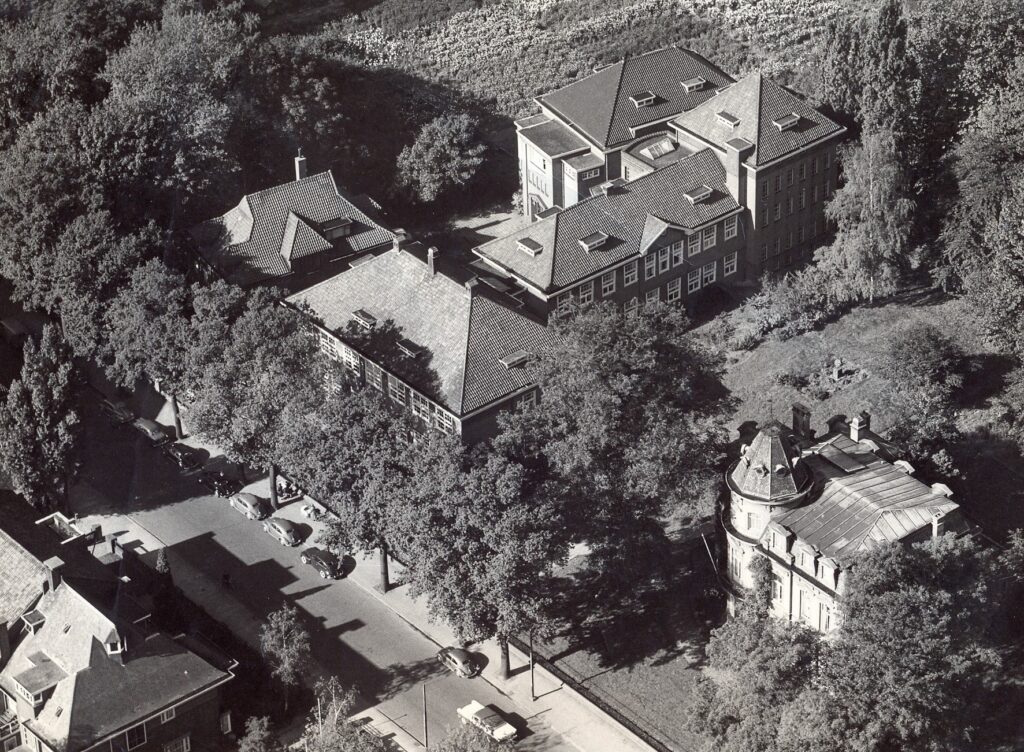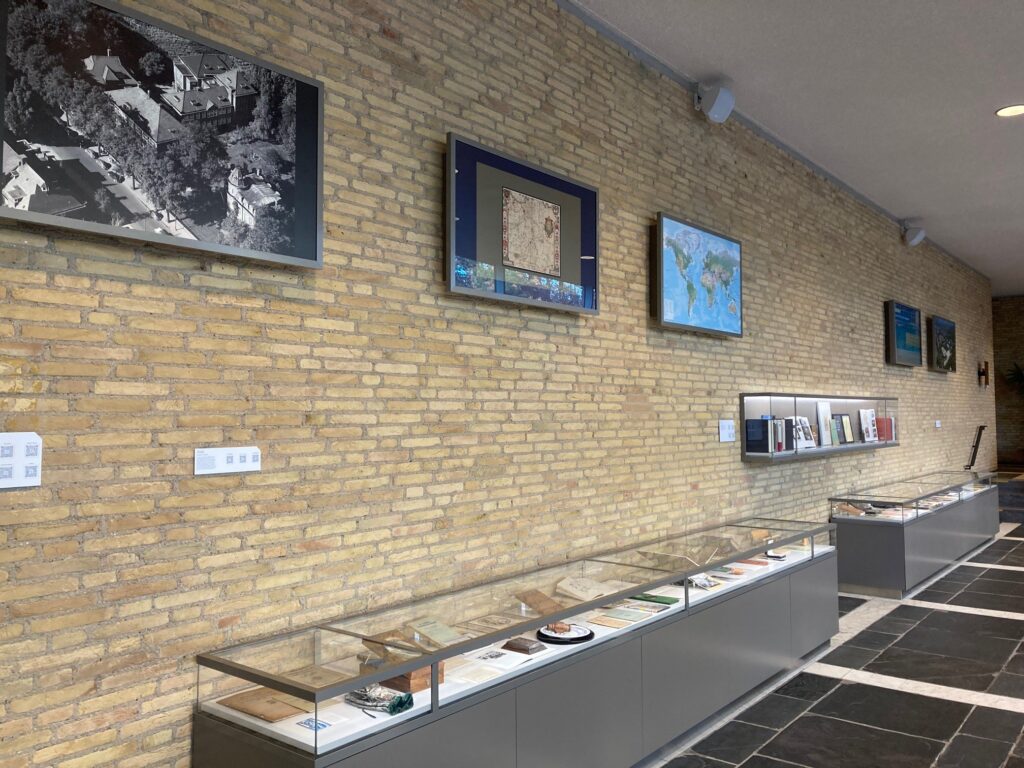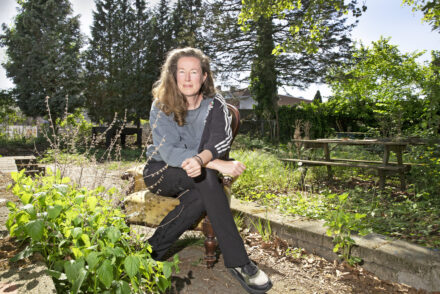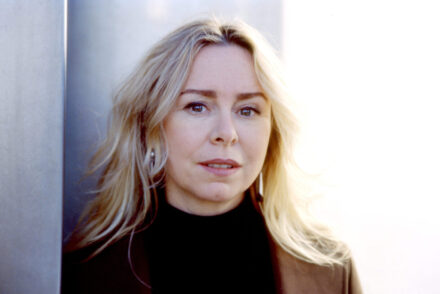The university’s mantelpiece
In a scant century, the university went from 28 to 20,000 students. Branches were added in downtown Tilburg, Den Bosch, and Utrecht. But who still remembers the rich history of Tilburg University, wonders Pieter Siebers. And what does it teach us about where it should go in the future?

In 2027, Tilburg University will celebrate its centennial, a reason for an undoubtedly glorious celebration of the one hundred years that have passed since the institution began as the Roomsch Katholieke Handelshoogeschool. Remembering that period include the names of Cobbenhagen and Goossens, full professors and rectors of the first hour after whom buildings on campus and streets in the area are named. The honor of a street or square name has also fallen to Professors Gimbrère, Verberne and De Moor.
An older alumnus will remember those names because they were founding fathers and managed to create a university institution under difficult circumstances. They shared their zeal and the ideal of emancipating the Catholic populace—which was still very large at the time—by providing an institution of higher learning in the field of economics. An academic institution whose graduates ‘did not have their hands askew for practice.’ Now we call that valorization, or impact.
That the names of Cobbenhagen et al. have been somewhat forgotten is not an isolated fact. Knowledge about politicians, writers, or poets who really mattered a century ago is also limited, as research or surveys keep revealing. The reason to me seems to be the declining interest in history as such. The number of teaching hours devoted to history in high schools has been reduced by more than half in the last fifty years. And this university once had a(n) (endowed) professor specializing in the history of the discipline in almost every School.
Many people shrug off such developments, questioning the usefulness of history. After all, what does this knowledge actually provide, other than a lot of discomfort about the misdeeds of our forefathers? Godfried Bomans —an also almost forgotten writer—once said that a prophet can be regarded as a historian who faces forward. I could not trace where and when he said that, but I seem to recall that it referred to Catholic emancipation, to which Tilburg University owes its existence. And scientists, they are the prophets of modern times.
This university has never neglected its own history, but neither has it been deeply cherished. Although there are three fist-sized books, each covering a 25-year period, they are not widely known. For historical purposes, however, they are indispensable, and the three volumes bring with them the obligation for a fourth volume, which will be published in 2027.
That book, about a century of development and growth will take on a somewhat different format, including having emeriti and former staff members speak. And no doubt more use will be made of visual material uncovered in the archives in recent years by the Academic Heritage unit launched in 2017.
Some of that material has been on display since late last year in several display cases set up in Cobbenhagen Building. They contain various yearbooks, study guides, and scientific publications, as well as the first logo, paraphernalia from the student world, the grade lists of the later Minister Schmelzer, and various tokens. Also part of the selection is the handwritten blueprint that Professor Cobbenhagen wrote in 1926 for the curriculum, which named philosophy a compulsory course (and which it still is).
The archives also contain material from the period up to 1962, when the institution was still located on Bosscheweg (today’s Tivoli Street, where Interpolis’s garden is now located, see the top photo). The institution’s move to the campus was the prelude to impetuous growth, which continues to this day.
A year after the opening of the first building on campus, the faculties of Law and Social Sciences were established, in addition to the existing economics program. In 1981, an experimental faculty of Arts was added, from which TSHD emerged, after which the institution grew further with the arrival of TIAS Business School and the School of Theology. The objects and publications in the display cases show something of those developments. What also cannot be missing are photographs and writings from the glorious year 1969, when the first university occupation in the Netherlands took place—in Tilburg.

The showcases include several items that address the broad story of the university and clarify, for example, that the research being done in Tilburg has meaning beyond university walls. Publications such as the Atlas of European Values (which Trouw now reports on weekly) illustrate this, or the children’s books with texts by full professors who performed for the Children’s University, which was launched in 2005. Moreover, there are examples of impact programs, in which knowledge is put to concrete things like the Zero Hunger Lab—where mathematics plays a major role in achieving global food security.
The showcases feature QR codes that unlock the story—also found on the web—of the institution that started in 1927 with 28 students and now numbers some 20,000. Not only on the beautiful, green campus, but also in the city center, in Utrecht and in Den Bosch, where branches of Tilburg University are now located.
Partly because of expansion—in almost all fields—the question of how the university should develop further arises again and again. Its own history turns out to offer numerous starting points, such that it pays not to turn your back on it.

Pieter Siebers is Academic Heritage project manager. After a long tenure at the university, during which he was also editor-in-chief of Univers and later handled the Old School column, he is retiring. This is his last contribution for Univers.
Translated by Language Center, Riet Bettonviel






